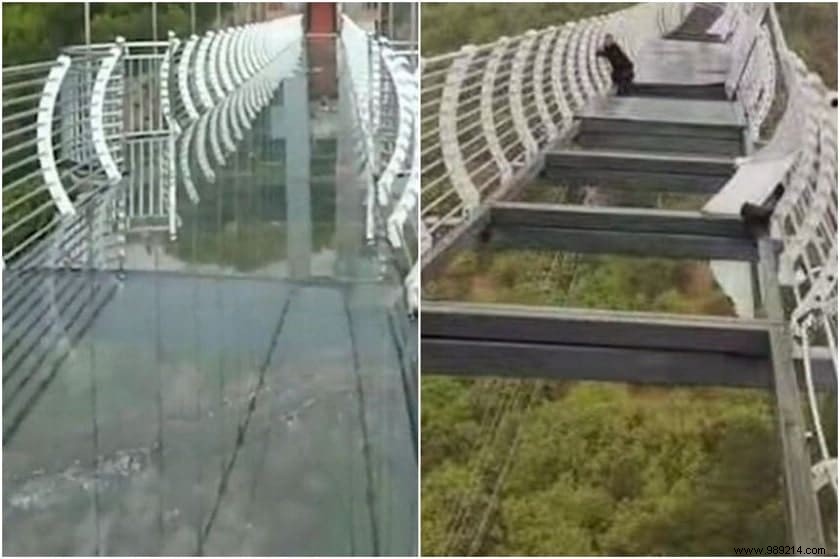Bridges and other glass-floored structures are proliferating across the globe, particularly for their tourism potential. Recently, outside the Chinese city of Longjing, a glass-bottomed bridge reportedly collapsed following winds of over 100 km/h, threatening the life of a tourist. Are these glass structures generally safe or should we fear their apparent fragility?
Strong winds reportedly shattered a glass-bottomed bridge in China, leaving a man trapped at a height of 91 meters. Authorities say the bridge outside the city of Longjing was hit by winds of up to 150 km/h. Similar glass-bottomed tourist attractions are becoming more common around the world, from London's Tower Bridge to the Grand Canyon Skywalk in Arizona, should we be concerned about their safety?
Paul Bingham, a materials physicist at Sheffield Hallam University in the UK, says he would have no problem stepping on one — as long as it's not in a gusty wind. 150 kilometers per hour. “Designers and architects need to think carefully about the choice of materials used, but I don’t think people should worry .
Bingham points out that glass has two weaknesses as a building material. “The first is that glass is inherently brittle. The second is that it has no crystals, so once a crack on the surface starts to spread, there's not much to stop it “, he explains. Much glassmaking research focuses on how to reduce the amount of surface defects. “If the surface is scratched, the glass is much weaker than if the surface is pristine and has not been in contact with dust or the atmosphere .
There are a number of techniques for creating extremely strong glass of the type probably used for the Longjing Bridge. The first is to coat modern glass with another material, such as a polymer, which protects it from defects. These materials are developed to have the same refractive index as glass, so they do not distort light rays passing through it, making it appear like normal glass.

Many glass manufacturers can add flexible polymer laminates between sheets of glass so that even if one layer breaks, the sheet remains intact. Bingham explains that the glass on the bridge was likely to have had such coating and laminations, but it would also have been tempered. This has two benefits:it makes the glass stronger, and when it breaks it tends to form harmless pieces rather than sharp shards.
Hardening crushes the outer surfaces of the glass and stretches the interior. This can be done chemically, which involves soaking a sheet of glass in molten potassium nitrate, causing the sodium in the glass to migrate into the molten material and larger potassium atoms to migrate within. It can also be done thermally by rapidly cooling the surface of the molten glass, allowing the inner section to cool more slowly. This compression effectively forces the filling of all small defects and prevents them from spreading.
The collapse of a glass-bottomed bridge could theoretically be due to flaws in the glass that could allow it to crack, or allow cracks to propagate, Bingham says, but he thinks that's unlikely. . So he insists that glass bridges are safe. It's much more likely in this case, he says, that the exceptionally strong winds created too much tension for the glass of the bridge to hold while visitors were on it.